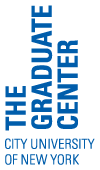THE GENOME ACCESS COURSE (TGAC)
November 29-30, 2018
in conjunction with the Graduate Center at the City of New York (CUNY)
This course is now full
All registrations received after November 16 will be automatically waitlisted
Instructors:
Delphine Fagegaltier, New York Genome Center
Benjamin King, University of Maine
Steven Munger, The Jackson Laboratory


This course will take place in New York City at the Graduate Center, CUNY.
The Genome Access Course is an intensive two-day introduction to bioinformatics. The course will run from 9 a.m. to 6 p.m. on both November 29th and 30th.
The course is broken into modules that are each designed to give a broad overview of a given topic, with ample time for examples chosen by the instructors. Each module features a brief lecture describing the theory, methods and tools followed by a set of worked examples that students complete. Students are encouraged to engage instructors during the course with specific tasks or problems that pertain to their own research.
The core of the course is the analysis of sequence information framed in the context of completed genome sequences. Featured resources and examples primarily come from mammalian species, but concepts can be applied to any species. The course also features methods to assist the analysis and prioritization of gene lists from large scale microarray gene expression and proteomics experiments. Summaries of the topics are listed below.
Sequence, Gene, and Protein Resources
NCBI Sequence, Gene, and Protein Resources
Model Organism Databases: Mouse Genome Informatics, Rat Genome Database, ZFIN, FlyBase
Protein Sequence and Domain Resources: UniProt, PDB, InterPro
Proteomics Resources: IPI, ExPaSY, PRIDE
microRNA Resources: miRBase, microCosm Targets, TargetScan, PicTar
Repositories of High-Throughput Sequence Data
Repositories of Gene Expression Data: GEO, ArrayExpress
Gene Expression Profiling Resources
Gene Ontology
Genome Browsers
Genome Sequencing and Assembly
Gene Annotation
Overview and Comparison of Major Genome Browsers: Ensembl, UCSC, NCBI Map Viewer
Adding custom tracks
Bulk genome retrieval tools: BioMart, UCSC Table Browser
de novo Analysis of Sequences
Local, Global, Pairwise, and Multiple Sequence Alignments
BLAST and BLAT Algorithms
Scoring Matrices: PAM, BLOSUM
Iterative Profile and Pattern Searches
Multiple Sequence Alignment Programs
Visualizing & Editing Multiple Alignments
Sequence Variation
Types of Sequence and Structural Variation
SNP Resources: dbSNP
Structural Variation Resources: dbVar, DGVa, HGVbase
Comparative Genome Analysis and Functional Genomic Elements
Finding Putative Regulatory Elements in Genome Sequence by Comparing Genomes
Ortholog and Paralog Resources
Multicontigview in Ensembl
Comparative Tracks in the UCSC Genome Browser
DCODE and ENCODE Resources
Analysis of High-Throughput Sequence Data
Common File Formats: FASTQ, SAM, BAM
Quality Control and Diagnostic Analyses
Mapping Reads To a Reference Sequence
Finding Putative Mutations and Polymorphisms
RNA-Seq Data Analysis
ChIP-Seq Data Analysis
de novo Assembly
Galaxy Resources
Gene Set Enrichment and Pathway Analysis
Prioritizing Genes from Microarray and Proteomics Experiments
Gene Set Enrichment Analysis Tools: GSEA, DAVID
Pathway Resources: Reactome, HPRD NetPath, KEGG
Protein Interaction Resources: MIPS, MINT, BIND, DIP
Computers
Each student will be provided with a laptop (if needed) and internet access for the duration of the course. You can also bring your own laptop to the course provided it meets the following requirements: 1) a standard browser (Internet Explorer, Firefox, etc.) that is up-to-date with security patches and bug fixes, 2) wireless internet capacity, and 3) the ability to view and modify plain text files and spreadsheets (e.g., Microsoft Word and Excel). Both PCs and Macs are acceptable as long as they're updated with all security patches and bug fixes.
Target Audience
The Genome Access Course is open to all on a first-come, first-served registration system. It is most beneficial for bench scientists transitioning into projects that require intensive analysis or integration of large data sets. The course will introduce you to publicly available resources, and it will also help you develop a vocabulary that can be used to collaborate with computational scientists. If you already have significant programming or data analysis experience, this course is not appropriate for you.
For more detailed curriculum on methods used in computational biology, please see the Computational Genomics course. Students interested in the practical aspects of software development are encouraged to apply to the course on Programming for Biology. Students who would like in-depth training in the analysis of next-generation sequencing data (e.g., genome assembly and annotation, SNP calling, and the detection of structural variants) may be interested in the course on Advanced Sequencing Technologies & Applications. Finally, please see the course on Statistical Methods for Functional Genomics if you would like training in the statistical analysis of high-throughput genomics data.
The curriculum of The Genome Access Course has been developed in conjunction with staff at the Wellcome Trust Sanger Institute and the European Bioinformatics Institute (Hinxton, UK) who teach a parallel series of courses in the UK; see the Open Door Workshops for more information.
Support
Major support provided by the Helmsley Charitable Trust. Limited financial aid is available; please apply in writing to the course registrar describing your need for financial support.

Pricing
Academic Package $760
Corporate Package $1,350
Both packages cover registration, coffee breaks, and lunches; neither housing nor transportation are included. Full payment is due three weeks prior to the course.
Location
The November 2018 iteration of The Genome Access Course will be held at the Graduate Center of CUNY (365 Fifth Avenue, NY NY 10016). The Center is located in the heart of Manhattan, two blocks from Penn Station and across the street from the Empire State Building. It is easily accessible by public transportation or car service from all three New York-area airports: John F. Kennedy International Airport, LaGuardia Airport, and Newark Liberty International Airport. Note that all registered students must make their own housing and travel arrangements.